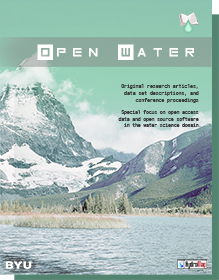Article Title
Abstract
In the past four decades, hundreds (if not thousands) of hydrological models have been developed to predict the transfer of water through landscapes. Despite this variety of models, the basic challenge for all kind of models is the same: solve the dynamic local to global water mass balance of a landscape. However, the transport processes, surface flow, subsurface flow, snow drift, evaporation and transpiration can be modelled with differing complexity, theory and parameterizations. Clark et al. (2011) denote, that a hydrological model is therefore not one hypothesis of process behaviour, but a multitude of interconnected hypotheses, which remain untested, since only the global model behaviour is tested against observation data. Hence, model intercomparison studies are difficult to interpret, since the origin of the different model performances is not really tested. Despite, the decisions of the modeller might have a stronger impact on the results than the chosen model itself, as indicated by the Chicken Creek model experiment (Holländer et al., 2009). Is this the reason “why we can’t do better than TOPMODEL” as Buytaert et al. (2008) ask? The authors formulate three different requirements that new model developments in hydrology should fulfil to advance the modelling of water transport: accessibility, portability and modularity. Accessibility means, all processes, and essentially the source code of the model, needs to be available and transparent. A model is portable, if the usage of new model codes runs on different platforms – from the Windows desktop PC to the supercomputer for uncertainty studies. Modularity is given if only parts of the model (modules) are interchangeable to account for the effect of different process descriptions, without changing other parts. This is in line with Clark et al.’s call for testable multi-hypotheses through extremely fine grained modularity and interchangeability of submodels.
BYU ScholarsArchive Citation
Kraft, Philipp; Frede, Hans-Georg; and Breuer, Lutz
(2013)
"CMF - An open source hydrological modelling toolkit,"
Open Water Journal: Vol. 2:
Iss.
1, Article 19.
Available at:
https://scholarsarchive.byu.edu/openwater/vol2/iss1/19
